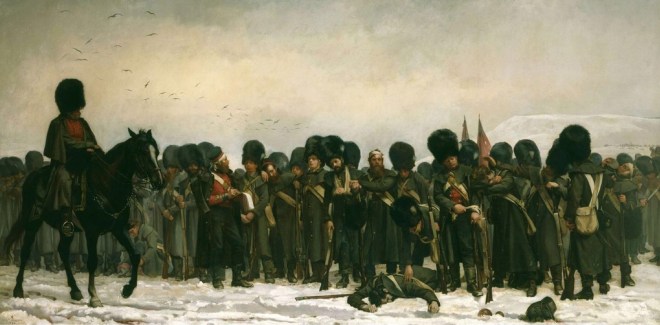This is a bit of a rant. You’ve been warned!
Don’t you hate it when you’re listening to one of your heroes and they blether on about nonsense? I had this problem listening to the Sam Harris interview with Stephen Fry. There were times I wanted to reach into the podcast-thingy and slap him about the face and say ‘Wake up old chap, I say, you do come across as a bit of an old fart! Tally Ho!’ Just me? Okay…
That was just a little annoying, but last week I was listening to an interview with my hero Ken Wilber (Integral Life, author of dozens of books, genius? perhaps…) anyway…he said, with regards to the ‘so-called patriarchy‘; “It’s not as though men have been sitting around throughout history planning ways to oppress women.” Aah, yeah, Ken, they have!
“MEN HAVE BROAD SHOULDERS AND NARROW HIPS, AND ACCORDINGLY THEY POSSESS INTELLIGENCE. WOMEN HAVE NARROW SHOULDERS AND BROAD HIPS. WOMEN OUGHT TO STAY AT HOME; THE WAY THEY WERE CREATED INDICATES THIS, FOR THEY HAVE BROAD HIPS AND A FUNDAMENT TO SIT UPON, KEEP HOUSE AND BEAR AND RAISE CHILDREN.”
Socialist Alternative
(MARTIN LUTHER, 1531)
Some examples, Mr Wilber…many of which continue in some countries to this day.
- The division of labour and women’s access to certain jobs throughout history. Women required to stop work after marriage.
- Male domination of the Sciences and universities
- Perpetuation of myths and superstitions about women involved in health care and herbalism (accusations of withcraft, etc)
- Limited access to education
- medicalisation of childbirth
- multiple wives in certain cultures and religions
- Dowrys
- Succession and inheritance in pretty much every country
- The right to vote. In the UK, The Great Reform Act of 1832 specifically banned women from the vote while expanding the right to vote to many more men. A clear case of men actively planning ways to oppress women.
- full-face veils and extreme restriction of women and girls
- rape in war
- JusPrimae Noctis, or Droit du seigneur (Okay so this one might be a myth…)
Need I go on? I know some of these things also victimised men of lower classes and many were upheld by women, but that doesn’t make it okay, and it certainly doesn’t mean it wasn’t initiated and presided over by men. And, yes, I bloody know #notallmen. Feminist allies have been crucial in women gaining some of the ground they have simply because of the closed-shop nature. If no man had ever thought that women were worth including many of us would still be getting married at 11 and dying in childbirth. Oh, wait…
Here’s one more, in case anyone needs a specific case of the blokes-in-charge actively changing the rules to bar women from achieving equal footing. (Listen to Malcolm Gladwell’s 2016 podcast, Revisionist History, episode entitled “The Lady Vanishes.” Our very own Julia Gillard gets a mention.)
The Royal Academy of Art was founded in 1768 by 32 men and 2 women. There were some pretty heavy restrictions on what the women could and couldn’t do within the academy but considering there were few other options for women to achieve in British society even up to the 1960s, the RA came across as positively feminist. Interestingly Literature and Letters was the only area where women seemed to have gained success in their own right, but obviously only women of means. As Virginia Woolf confirmed, in order to write, women need money and a room of one’s own.)
At the RA, the women members were heavily restricted in the genres in which they could work. Women weren’t allowed to attend life drawing classes (see painting below). This portrait of the founding ‘fathers’ of the RA kindly includes two portraits of the female founders, sketched out on the back wall.

It was this closed-shop sausage-fest that determined success as a visual artist in Britain. Most certainly not a level playing field and if you couldn’t crack the RA, you just didn’t have a chance of achieving fame or fortune as a painter in England.
To find potential new members, artists were invited to submit works to the yearly show which is still held every year. It’s far more accessible to women these days but it’s been quite a journey! At the RA show, the creators of the more successful works (popular with the thousands of people who visited) were then invited to join the academy.

Elizabeth was invited but missed out on an invitation by 2 votes (‘and rightly so‘ she later wrote in her memoir…) According to Gladwell’s podcast, the all-male cohort then met to change the rules to further restrict women’s acceptance and movements within the RA if they did happen to meet the stringent requirements.
So, Ken, if you’re reading this, you might want to do a little homework on the history of the experience of women.
Rant over. Thank you.


Loving the daily posts!
https://medium.com/@tammybreitweiser/weekend-coffee-share-june-9th-edition-6ca330a1ff01
I’m so glad. It’s a bit of an obsession and strangely enough I never run out of things to say 😉 I’t’s nice to think someone is out there reading it! Thank you!